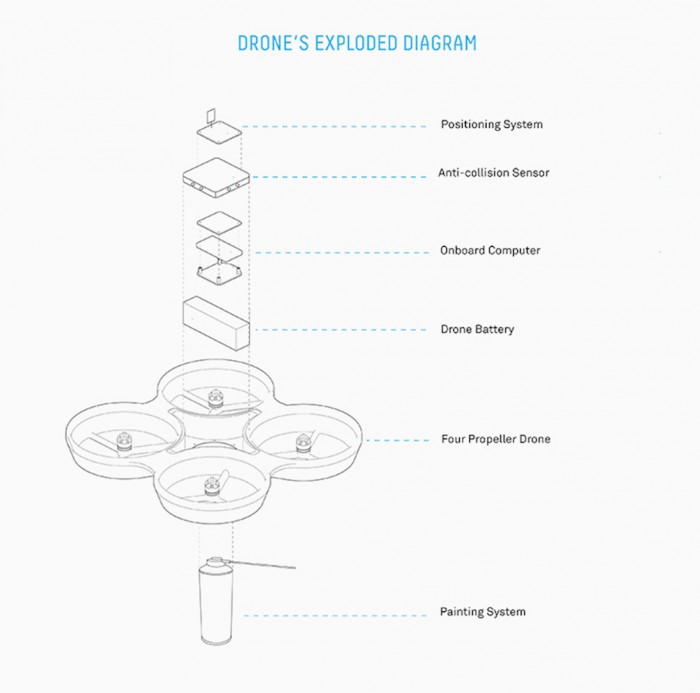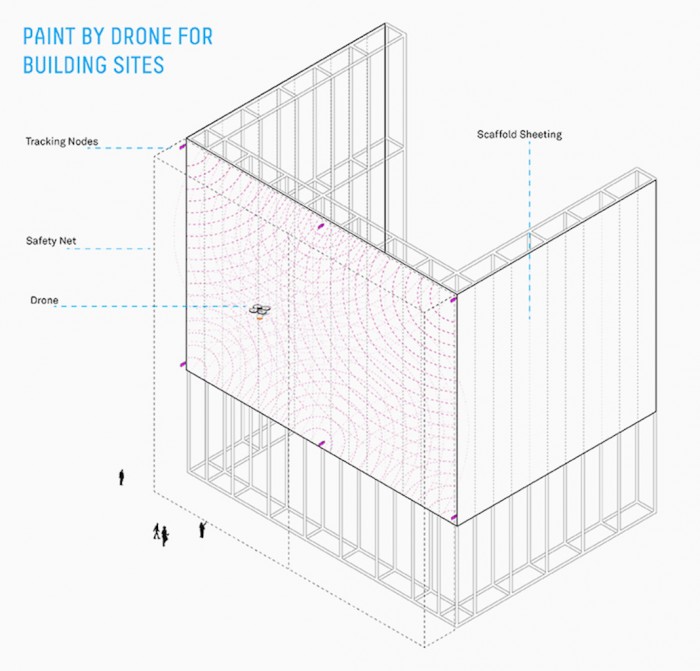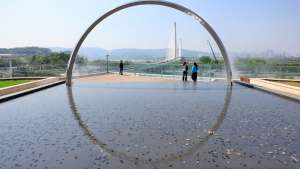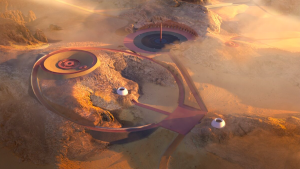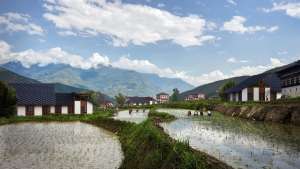Walls, bridges, rooftops and even skyscrapers are just a few playgrounds that graffiti artists call home. However, none of these surfaces is safe or easy to work on, not even for the most daring and acrobatic street artist. To solve this inevitable element of danger, designers at the Carlo Ratti Associati firm developed a system called “Paint By Drone”.
What is it exactly?
“Paint By Drone” is a fleet of one-metre wide remote controlled aerial vehicles carrying spray paint tanks which are equipped with sensors. It’s also a system that enables large-scale collaborative graffiti projects.
How does it work?
An artist will do an initial drawing on a canvas, which can be coloured in by users via the mobile app, with each person picking their favourite ‘spot’ of the canvas that the drone will paint. Or, people can use the mobile app to draw their own designs, imagining what would be seen once the building under the scaffolding is finished.
Programmed to draw submitted content from the app, the drones then begin flight and paint using their CMYK (Cyan, Magenta, Yellow, Key) paints.
From image painting to flight, a central management system regulates the drones’ operations in real-time, using an advanced monitoring system that precisely tracks the UAV’s (Unmanned Aerial Vehicles) position, detecting multiple devices simultaneously.
A protective net is also placed over the building’s surface to ensure that the drones move into a safe space.
Founder Carlo Ratti’s was motivated to unleash the potential of what he calls “phygital graffiti”. He says that our cities are filled with blank vertical surfaces, either permanent or temporary, which have great potential but are mostly used in bland ways. At the heart of the project is the intention to highlight any city’s art scene by giving life to exciting and dynamic canvas.
Interested in seeing the first installations of Paint By Drone?
The giant canvases are planned for fall 2017 in Berlin and Turin. With the potential to be installed in just a few hours and paint on virtually any city surface, this Carlo Ratti Associati concept pushes boundaries of time and space.

